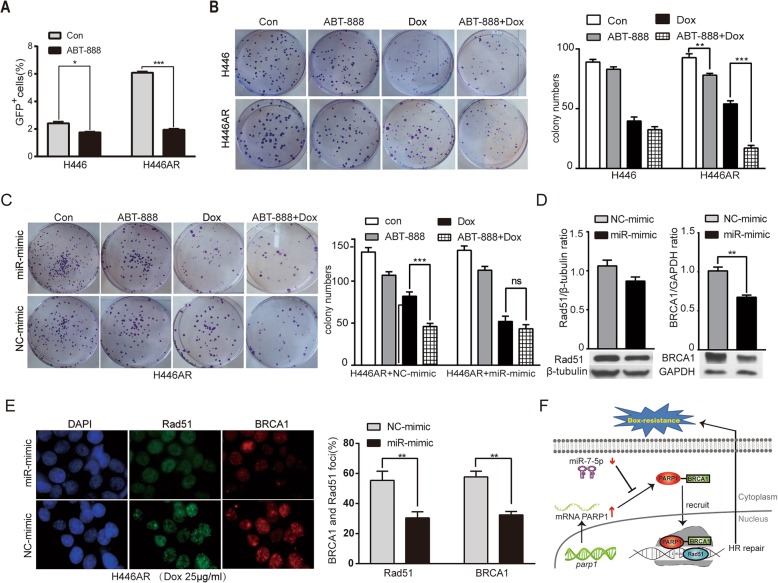Fig. 4.
Inhibition of the HR repair pathway by miR-7-5p in Dox-resistant SCLC cells. a The inhibition of HR repair by PARP1 inhibitor (ABT-888) in H446 and H446AR. Cells were transfected with the reporter construct for 24 h and then treated with ABT-888 (10 μM) or control medium. HR repair activity was measured 24 h after the addition of ABT-888 by FACS. b Colony formation assays. H446A and H446AR cells were treated with ABT-888 alone, doxorubicin alone or combination of both for 14 d, and the quantification of the number of colonies was performed for each cell line. c H446AR cells were transfected with miR-7-5p mimic or NC-mimic, and the quantification of the number of colonies was performed in each group. d The expression of Dox-induced Rad51 and BRCA1 protein in H69AR cells with upregulated miR-7-5p levels. H446AR cells transfected with a miR-7-5p mimic were treated with 25 μg/ml doxorubicin for 24 h, and the Rad51 and BRCA1 protein levels were examined by Western blot. e Quantification of Dox-induced BRCA1 and Rad51 foci formation in H446AR cells. H446AR cells transfected with a miR-7-5p mimic were treated with 25 μg/ml doxorubicin for 24 h, and then the percentages of BRCA1 and Rad51 foci were determined by immunofluorescent staining. The mean ± SD of three independent experiments (right panel) and representative images (left panel) are shown (b-c). f A working model of miR-7-5p function in Dox-resistant SCLC. The downregulation of miR-7-5p promoted HR repair in DNA by targeting PARP1 and conferring chemo-resistance against doxorubicin. *P < 0.05, **P < 0.01 and ***P < 0.0

